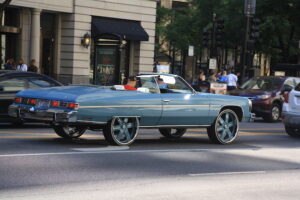News & Updates
The Case for Alternative Transportation


In 2019, the Kansas City, Missouri council voted unanimously to eliminate bus fares. This policy represented a massive change to their public transportation infrastructure, so the city started small, providing free rides to veterans and students.
When the COVID-19 pandemic began in 2020, the city chose to make all public transportation free for every citizen. This allowed Kansas City to maintain a ridership of 60-80% of its regular passengers. Elsewhere, public transportation use plummeted during the pandemic, and ridership was reduced to an average of 20% of pre-pandemic passengers. This new policy had great economic benefits for small businesses and families in Kansas City who relied on public transportation to get to work, in addition to widespread environmental benefits.
Not all cities have a substantial and well-functioning public transportation system like that of Kansas City. Regardless of significant disparities in public transportation infrastructure amongst different communities in the U.S., the more you learn about yours, the better poised you will be to use it.
Transportation accounts for 27% of United States greenhouse gas emissions, which is the United States’ largest contributing sector to climate change. To achieve carbon neutrality, we need to change the way we approach transportation. Cars and other individual vehicles have the lowest fuel efficiency of any mode of transportation.
By switching to public transportation, we conserve fuel, decrease air pollution, and therefore reduce our carbon footprint. According to the U.S. Department of Transportation, cars produce 50% more pounds of carbon per passenger mile than buses. Also, buses emit less air pollutants like carbon monoxide and nitrogen oxide per passenger mile, and save the U.S. the equivalent of 4.2 billion gallons of gasoline annually. These positive effects are magnified as more people utilize public transport systems.
Leave No Trace recommends that people “Plan Ahead and Prepare” to ensure that we minimize our impact on the environment. Utilizing public transport whenever possible is a vital piece of that principle. Take the time to learn about how you can travel with the least impact so that when the time comes, you are making the best possible choice.
It’s important to acknowledge that not everyone has access to a robust public transportation system. Instead, consider utilizing other forms of transportation such as biking and carpooling when they are available to you. When going on longer journeys and biking or walking isn’t an option, you can create similar positive impacts by choosing to take the bus or riding with another person. Carpooling has positive effects similar to buses, but at a smaller scale.
Even making the occasional choice to forgo taking the car can have outsized positive effects on the environment. The U.S. Environmental Protection Agency found that if 50% of Americans with cars chose to walk or bike for trips under a mile, it would decrease the amount of CO2 emitted into the atmosphere by 2 million metric tons per year, roughly equal to the annual energy use of 185,000 homes!
The impact of choosing to utilize bikes and walking instead of driving can be monumental not just for the environment, but for the people and animals that live within it. Not only do emissions produced by cars negatively impact the quality of wildlife habitats, but over a million animals are killed by cars every year in the United States. By learning about alternate modes of transportation, we can work to reduce the impacts that our day-to-day travel has on people, wildlife, and the earth.
Article Written by: Kenny Prior, Andrea Green and Sarah Steinke
Let’s protect and enjoy our natural world together
Get the latest in Leave No Trace eNews in your inbox so you can stay informed and involved.
